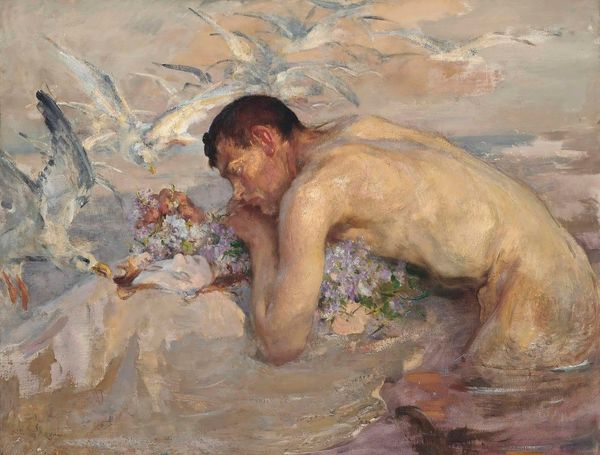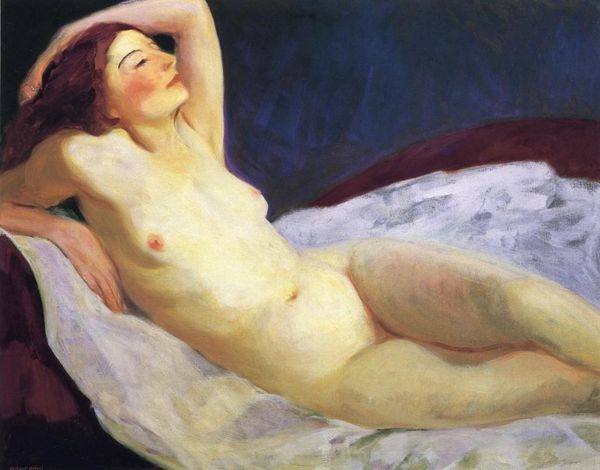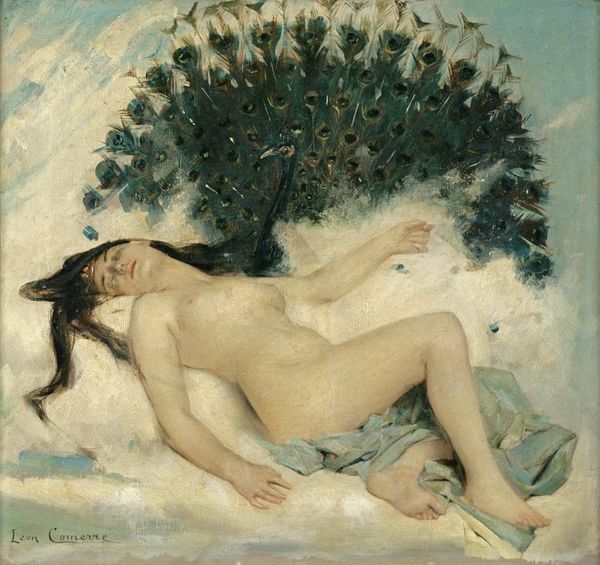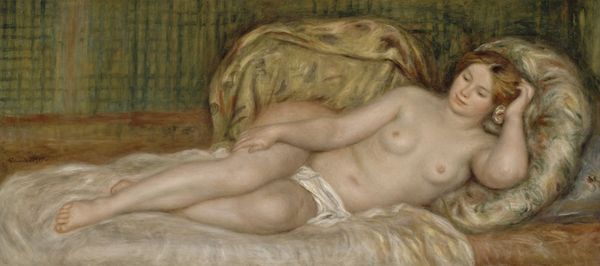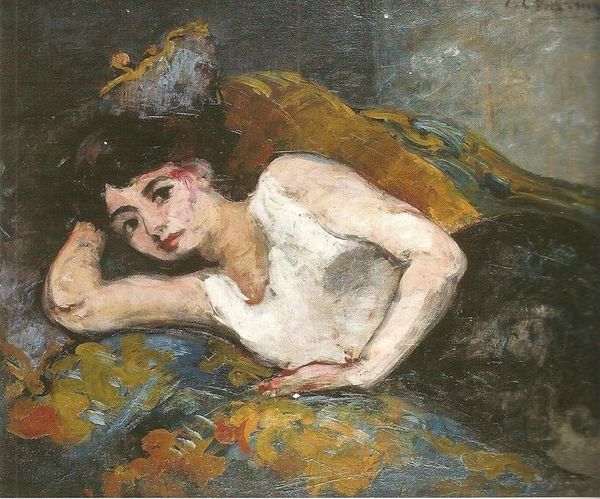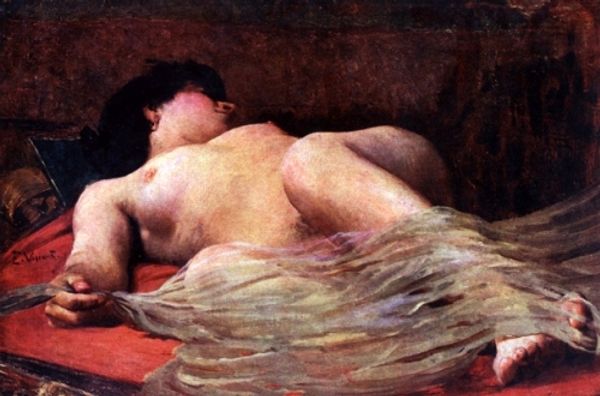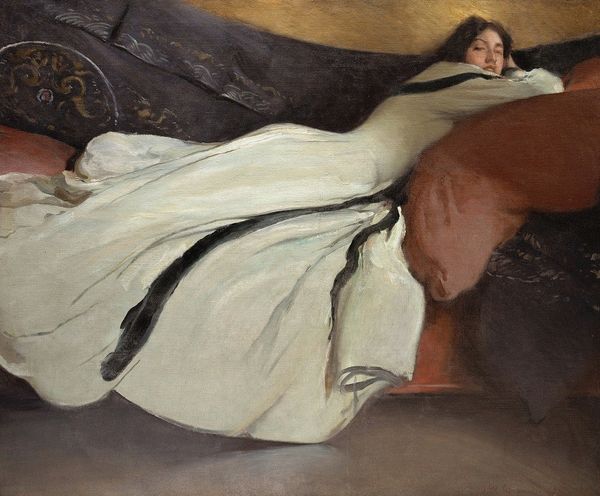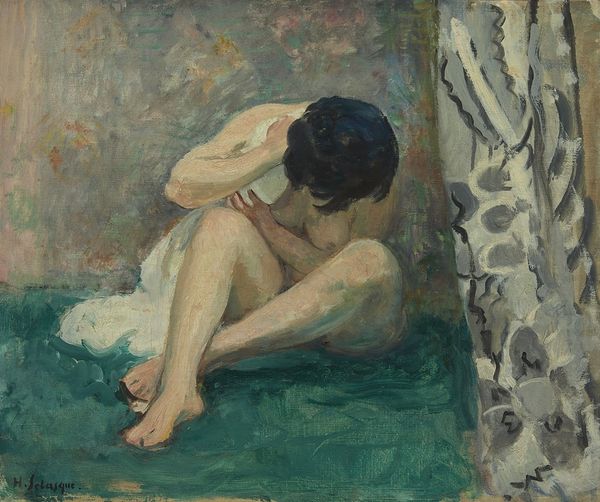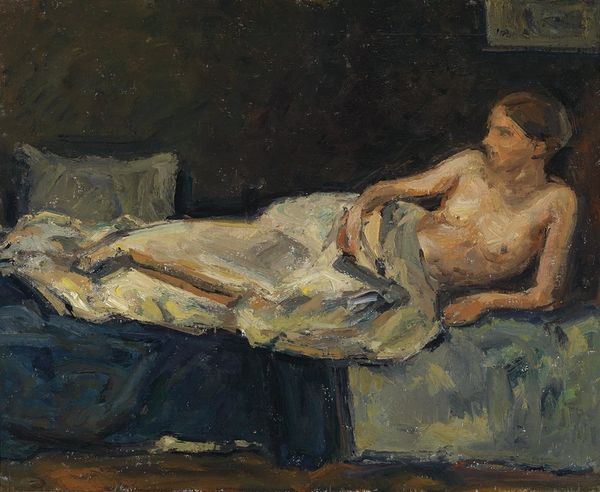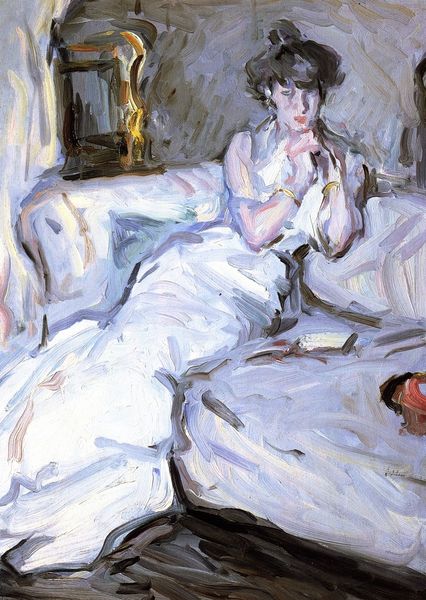
Copyright: Public Domain: Artvee
Curator: At first glance, this feels like a clandestine moment of leisure, wouldn't you agree? Editor: It definitely evokes a sense of sun-drenched languor. I immediately noticed the visible brushstrokes; the texture of the oil paint itself seems to capture the shimmering heat of a summer afternoon. Curator: Indeed. The piece is titled "Midsummer," painted by Leo Putz in 1906. The impressionistic style he employs here beautifully illustrates a nude figure resting in a dappled landscape. Editor: Putz clearly pays homage to Impressionism, working "en plein air" – a technique itself demanding particular working conditions, doesn’t it? Painting outdoors directly confronts the artist with the uncontrollable, variable materiality of natural light. The challenge of capturing the fugitive effects of light and atmosphere… that's what these artists were dealing with daily. Curator: Precisely. What is interesting here, though, is how he navigates the conservative expectations of the time. Nude paintings often were perceived through a patriarchal lens; a reflection of societal views on female sexuality and beauty, but there seems to be an intimate and personal narrative here, rather than just the purely exploitative. Editor: The softness in the rendition of her flesh, contrasted with those distinct brushstrokes almost reads to me like the materiality of this female body is actively shaping the pictorial landscape... like she's actually interacting with the fabric of light and ground in a real, physical sense. The very substance of the painting becomes complicit. Curator: An astute point. The placement within the landscape serves a dual purpose. There’s certainly a nod to idealized visions of the pastoral, and that connection to the historical depiction of women in relation to nature is key to how we perceive the work within its time. Editor: Right! When you consider the pigment sources Putz would have utilized—earth tones extracted through labor and commerce, those pigments are inherently entangled with power relations shaping social constructs around bodies and land ownership. I cannot ignore how the means of production become visible in that representation. Curator: Well said! The history embedded in the art's creation becomes so vital to unpacking it now. Editor: Absolutely. Looking closely always adds another layer to our understanding.
Comments
No comments
Be the first to comment and join the conversation on the ultimate creative platform.
